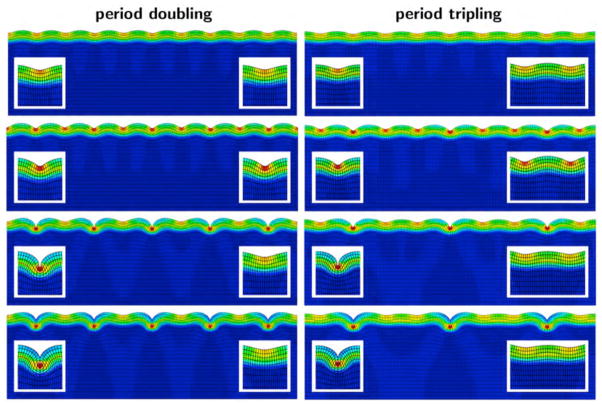Figure 5.
Emerging instability patterns of primary and secondary bifurcations: Moderate growth beyond the first instability point creates symmetric, sinusoidal wrinkling patterns, which are similar for period-doubling and -tripling (first row). Further growth triggers symmetry breaking into non-symmetric wrinkling patterns with sharper valleys and smoother ridges (second row). Continuing growth beyond a second instability point initiates period-doubling and period-tripling with alternating increasing and decreasing amplitudes (third row). As growth continues, contact zones emerge along two neighboring edges of a growing valley, while decaying valleys have almost entirely flattened out (fourth row). The close-ups of each snapshot highlight increasing (left) and decreasing (right) amplitudes.

